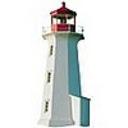Yahoo Answers is shutting down on May 4th, 2021 (Eastern Time) and beginning April 20th, 2021 (Eastern Time) the Yahoo Answers website will be in read-only mode. There will be no changes to other Yahoo properties or services, or your Yahoo account. You can find more information about the Yahoo Answers shutdown and how to download your data on this help page.
Trending News
When calculating a payback period are costs that occur after the initial expense factored in?
The question I am doing states that a mine spends $107 million in start-up costs. The mine will generate $13 million per year for the next 12 years. To comply with regulations the company will have to spend an additional $17 million to return the land back to its original state. The is no discount rate or cost of capital given.
So, I'm confused as to whether I should calculate the pay back period for just the original 107 million which would be 8.23 years, or for the total cost over the lifetime of the mine 124 million (9.54 years)?
Or is there something that I am missing altogether?
Thanks Steve, I realize that all cash flows in future need to be discounted. But the problem does not specify a cost of capital, so I'm interpreting this as being in bizarro world where risk is 0% and inflation is 0%.
2 Answers
- PrivateBankerLv 79 years agoFavorite Answer
There are special accounting rules for AROs - Asset Retirement Obligations. Essentially, an attempt to reflect the expense of the cost of returning the land (in your example) back to its original state AS that obligation occurs - i.e. over the useful life. I am going to assume you have not covered this "issue" in your class yet. So...
You could do one of two things: make an assumption that you set aside 1/12 of the $17m every year (this assumes this amount does not earn interest, but simply reduces the annual inflows), and then solve for payback period and/or IRR; or two, calc an IRR which has for its last cash flow: 13m inflow - 17mil outflow: net negative 4m cash flow. This gives an IRR of 4.77235%.
The first option makes your cash flows: 13m - (17/12=) 1,416,667 = $11,583,333 per year. And the payback period is: 107,000,000/11,583,333 = 9.237 years. IRR is: 4.27439% (Your real IRR would probably be higher because you would make assumptions about earnings on the funds set aside for the reclamation, thus less funds would need to be set aside, especially at the beginning, leaving more for cash flow, and w/ time value of money (more sooner is better) the IRR would increase.)
Hope I didn't confuse you....
- Steve2Lv 59 years ago
Yes. Those future costs are real. They are usually adjusted to net present value, for accurate evaluation of the net present value of the project, and for payback. You could assume a cost for capital and for inflation.They are certainly not zero. Corporate capital costs are typically fairly high, like maybe 7 or 8% or even higher if the credit rating of the company is lower. Inflation averages closer to 3%, long term average.




